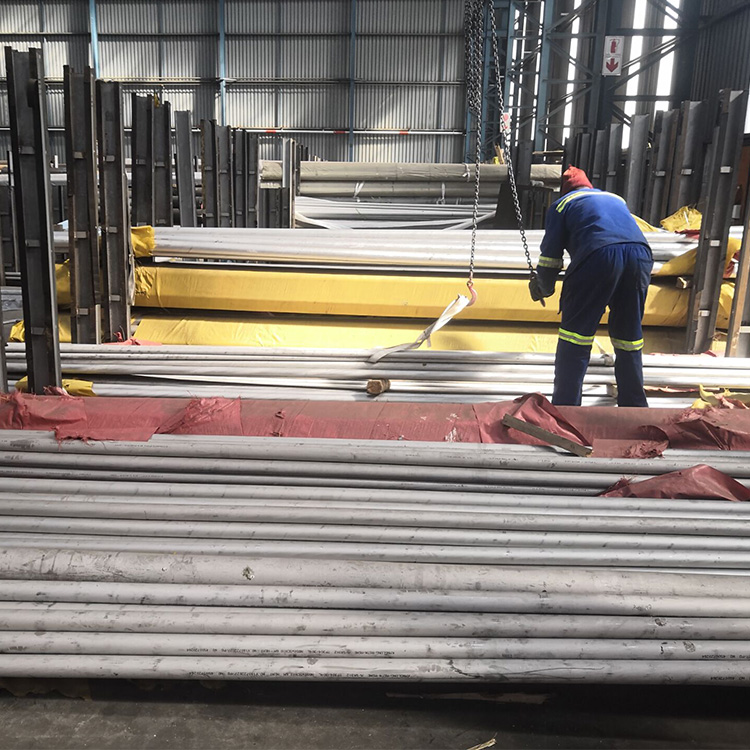
La diferencia entre el acero inoxidable y las aleaciones de níquel
Introducción:
El acero inoxidable y las aleaciones de níquel son dos materiales de uso común en diversas industrias debido a sus propiedades excepcionales. Si bien comparten algunas similitudes, también tienen características distintivas que los distinguen. Este artículo tiene como objetivo resaltar las diferencias clave entre el acero inoxidable y las aleaciones de níquel.
- Composición:
Acero inoxidable: El acero inoxidable está compuesto principalmente de hierro, junto con un mínimo de 10,5% de contenido de cromo en masa. Se agregan otros elementos como carbono, níquel y molibdeno para mejorar propiedades específicas.
Aleaciones de níquel: Las aleaciones de níquel, como su nombre indica, están compuestas predominantemente de níquel. También contienen cantidades significativas de otros elementos como cromo, hierro, cobre y molibdeno, dependiendo de la composición específica de la aleación.
- Resistencia a la corrosión:
Acero inoxidable: Una de las propiedades más notables del acero inoxidable es su excelente resistencia a la corrosión. El alto contenido de cromo en el acero inoxidable forma una capa protectora de óxido de cromo en la superficie, lo que evita la oxidación y la corrosión por diversos factores ambientales.
Aleaciones de níquel: Las aleaciones de níquel también exhiben una resistencia excepcional a la corrosión, particularmente en entornos hostiles. Su capacidad para resistir la corrosión se atribuye a la presencia de níquel, que proporciona una barrera protectora contra la oxidación y el ataque químico.
- Fuerza y tenacidad:
Acero inoxidable: El acero inoxidable ofrece buena resistencia y tenacidad, lo que lo hace adecuado para una amplia gama de aplicaciones. La adición de elementos como el carbono y el molibdeno puede mejorar aún más las propiedades mecánicas del acero inoxidable.
Aleaciones de níquel: Las aleaciones de níquel son conocidas por su alta resistencia y excelentes propiedades mecánicas, incluso a temperaturas elevadas. Estas aleaciones pueden mantener su resistencia en condiciones extremas, lo que las hace ideales para aplicaciones como las industrias aeroespacial y de procesamiento químico.
- Resistencia al calor:
Acero inoxidable: El acero inoxidable exhibe una resistencia al calor relativamente buena, especialmente en rangos de temperatura más bajos. Sin embargo, ciertos grados de acero inoxidable pueden experimentar propiedades mecánicas reducidas a temperaturas más altas.
Aleaciones de níquel: Las aleaciones de níquel sobresalen en aplicaciones de alta temperatura, gracias a su excepcional resistencia al calor. Pueden conservar su fuerza, resistencia a la corrosión y otras propiedades incluso a temperaturas elevadas, lo que los hace adecuados para su uso en entornos de calor extremo.
- Aplicaciones:
Acero inoxidable: El acero inoxidable se usa ampliamente en diversas industrias, incluidas la construcción, la automotriz, los utensilios de cocina y los equipos médicos. Su versatilidad, resistencia a la corrosión y atractivo estético lo convierten en una opción popular para muchas aplicaciones.
Aleaciones de níquel: Las aleaciones de níquel encuentran un amplio uso en industrias como la aeroespacial, el procesamiento químico, la generación de energía y el petróleo y el gas. Su alta resistencia, resistencia al calor y resistencia a la corrosión los hacen indispensables para aplicaciones exigentes en entornos extremos.
Conclusión:
En resumen, el acero inoxidable y las aleaciones de níquel difieren en términos de composición, resistencia a la corrosión, resistencia, resistencia al calor y aplicaciones. El acero inoxidable está compuesto principalmente de hierro y cromo, lo que ofrece una buena resistencia a la corrosión y resistencia. Por otro lado, las aleaciones de níquel, con su mayor contenido de níquel, proporcionan una resistencia superior a la corrosión, resistencia y resistencia al calor, lo que las hace adecuadas para aplicaciones más exigentes. Comprender estas diferencias es crucial para seleccionar el material adecuado para requisitos específicos en diversas industrias.
